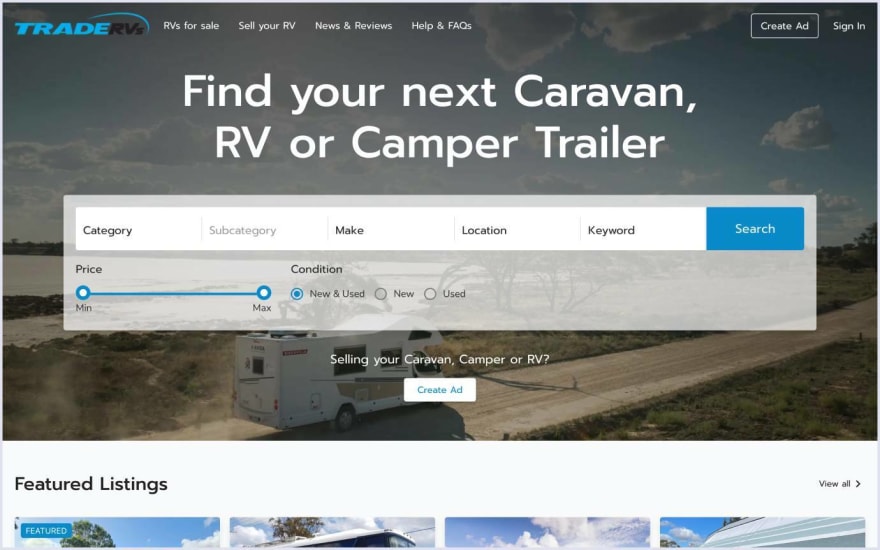This article was originally published on Codica blog.
Nowadays, online marketplaces are becoming more and more popular. Still, building a lucrative marketplace platform requires attention to many nuances.
In this article, we will consider what problems can occur when developing an e-commerce marketplace and how to escape them.
What is an online marketplace?
A marketplace is a platform that enables multiple suppliers to sell their services or products on it. For this, vendors pay a certain fee to the platform's owner.
Here, you can see the statistics of the most well-known e-commerce websites in the world.
Source: Statista.com
Now, let’s learn more about the common mistakes when building a marketplace.
Pitfall 1. Poor market research
The CB Insights research shows that the main reason for the startups' failure is no market need.
To avoid this problem, we recommend you conduct market research before developing an online marketplace.
Disregarding market research may lead to the breakdown of your web project. So, we recommend always starting your development process with the Product Discovery Phase.
Still, what is Product Discovery? It is the process of figuring out what features need to be created. It provides a better understanding of user needs and gives answers to questions that emerge throughout the development process.
We advise you to conduct the Product Discovery before building a minimum viable product (MVP).
Pitfall 2. Entering the market without an MVP
To discover how users will accept your web solution, present a minimum viable product. It is the first version of your marketplace with basic features.
Developing an MVP enables business owners to do the following:
- Check the hypothesis based on actual data,
- Lower costs of marketplace development by eliminating unnecessary functions,
- Reduce the chance of financial losses when starting a marketplace with errors,
- Identify unaccounted consumers' needs,
- Collect an initial customer base,
- Launch the market earlier;
- Attract investors.
Pitfall 3. Disregarding the chicken-and-egg situation
The first days of the online store functioning are the most challenging. An entrepreneur has neither sellers nor purchasers. This issue is called the chicken-and-egg problem.
Sometimes it is difficult to decide whether to attract more suppliers or focus on the consumers.
But how can you attract the first users?
One of the variants is to concentrate on a particular niche. For example, the Etsy marketplace attracted artisans from fairs and exhibitions. Thus, the handicraft startup transferred potential vendors and shoppers from offline to online.
So, describe your potential offline lead's advantages from being online. Each offline player can bring some of their customer audience with them.
In most instances, you should concentrate on attracting suppliers, artisans, or performers.
Source: Knowband.com
Pitfall 4. Low-quality UX/UI design
Another error when starting a marketplace is low-quality UX and UI design.
What does UX/UI design signify? User experience (UX) design determines how the interface operates. User interface (UI) design determines what the interface looks like.
Quality UX/UI design makes your platform more appealing than others on the market.
When developing a marketplace design, developers aim to place the goods conveniently. The interface must look clear, regardless of the number of elements and pages.
Below you can see an example of how our experts developed a design for the marketplace website.
Source: Caravan marketplace case study
Pitfall 5. Picking the inappropriate development approach
One more problem when starting an online marketplace is selecting an unsuitable creation method. You can choose to build custom software or use a template-based solution with the help of such platforms as Adobe Commerce, Shopify, and others.
Each of these development approaches has its pluses and minuses.
Ready-made platform
Pluses:
- Fast launch,
- Moderate pricing.
Minuses:
- Scaling your project will be challenging,
- Slow adaptation to the market,
- Low customization opportunities.
Custom web development
Pluses:
- Competitive edge and uniqueness,
- Realization of custom requests,
- A higher level of security.
Minuses:
- Larger price,
- More time required to launch the platform.
It is recommended to create an MVP of the marketplace with the help of a ready solution.
However, once you have tested your idea and want to build a fully-fledged platform, it’s better to further develop your website with a custom creation approach. To achieve this goal, turn to a reliable custom development company.
Conclusion
Often, startuppers get caught in pitfalls when they are just launching the platform. These mistakes lead to wasting resources.
Undoubtedly, creating a high-quality online marketplace is not an easy challenge. However, by hiring a professional web development team, you will receive a product to help you succeed.






Top comments (0)